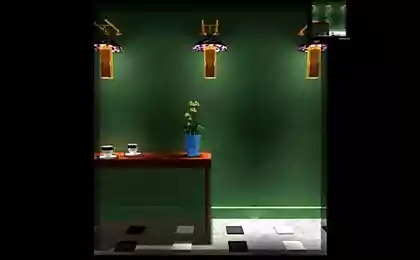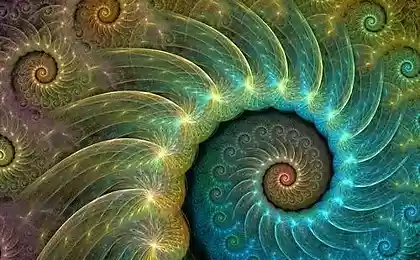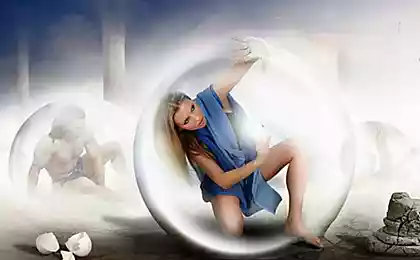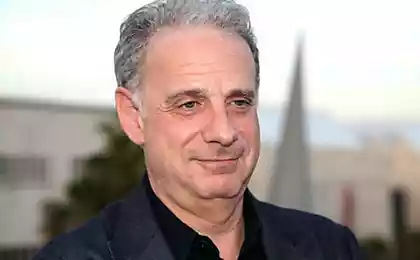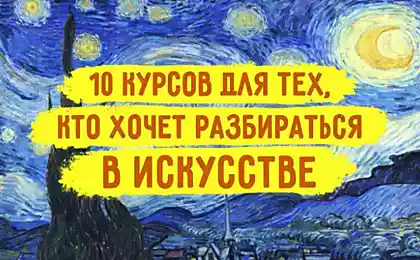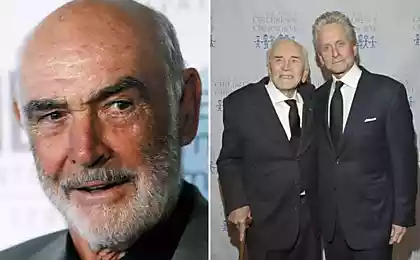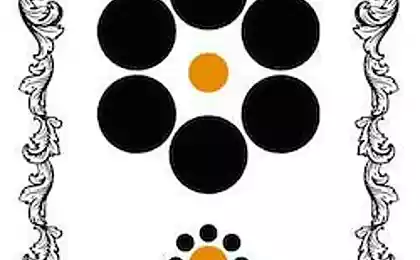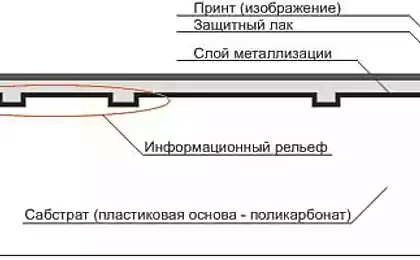1470
Known spoofs in art
Well-known auction houses are not always carried out the examination of the canvas and paints on a famous painting. These are talented rascals, who come up with the pedigree of artworks and thereby deceive the experts and even relatives of the artist. I suggest you look at the world's most famous forgery of works of art that have gone away with the fraudsters. "Landscape with a stream," Ivan Shishkin value of purchase: $ 1, 1 million In 2004, the auction house Sotheby's auctioned, which took place in the framework of the "Russian Week" Shishkin "Landscape with a stream" with an estimate of 700 thousand pounds ($ 1, 1 million). However, shortly before the auction, the British newspaper The Guardian published an article in which he demonstrated that the landscape is very similar to the picture of a little-known Dutch artist Marius Kukkuka. Different picture only because the picture of the Dutchman, there are people on the landscape and "Shishkin" they do not exist, although in a corner of the painting was the artist's signature. At Sotheby's assured that the signature Shishkin was checked for authenticity and the similarity of the paintings can be explained by the fact that it was written at a time when the Russian artist was under the influence of the Düsseldorf school of painting. Sotheby's estimate turned out to be 140 times higher than that exhibited by a picture Kukkuka auction house Bukowskis in Stockholm a year earlier. In the Guardian article, one of the officers of the house said that the painting was sold for $ 64,000, which surprised her a lot and colleagues.
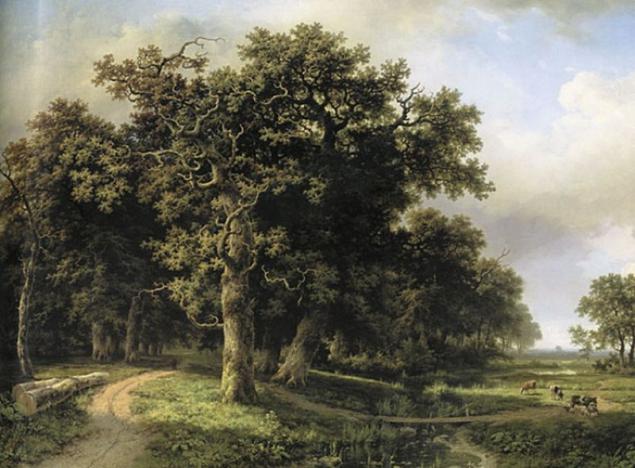
In mid-September in the United States completed the process of art dealer Glafira Rosales, who managed to sell under the guise of originals 60 fake works of art worth a total of $ 30 million. Now Rosales waits 20 years in prison, but in a few years - from 1994 to 2009 - it fraud goes undetected. Pictures acquired major New York gallery. Cost of purchase: $ 17 million
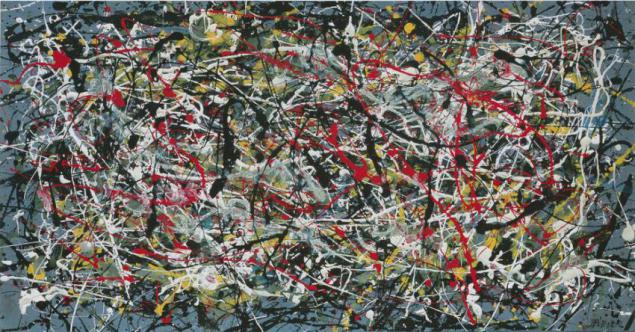
Forgery Giacometti sculptures by Alberto Giacometti - a famous sculptor, painter and graphic artist, one of the greatest masters of the XX century. A forged his works the Dutch painter Robert Drayssen, one of the most famous counterfeiters. Like most of his "colleagues", the creative life Drayssena there was bad - he simply did not need anyone! His first fakes he did in the 80s. Then Drayssen met with great authority black art market. Among his first customers, for example, was Michael Van Ryan, one of the most successful dealers in the illegal art market. In the late '90s he became Drayssen began to copy the style of Giacometti. The sculptor of his life created a bit of work, some traces were lost. Thus it was invented the story that Giacometti's brother Diego, at night, make copies with sculptures and hid them in the closet. Copies dispersed through the world of millions of euros as an intermediary Drayssena not been arrested, and the forger did not flee to Thailand. I managed after all! Not everyone is so lucky! Cam also Drayssen in an interview with the German Der Spiegel magazine said nothing to regret, and that people are willing to pay tens of thousands of euros for this Giacometti, deserve to be cheated. The most expensive work of Alberto Giacometti, by the way, was sold at Sotheby's in 2010 for $ 104 million. The expert allegedly shows a previously unknown sculpture by Giacometti.
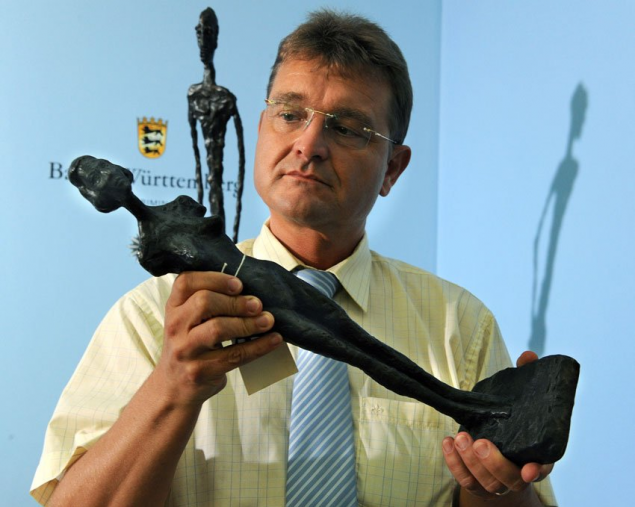
"Christ at Emmaus", Jan Vermeer The purchase price: $ 6 million Dutch painter Han van Meegeren, who was born in the late XIX century, the famous work of fakes in the style of Jan Vermeer. The wealth he brought the painting "Christ at Emmaus". His work Meegeren, worked as an art dealer in 1937 sold under the guise of a canvas by Vermeer. After this transaction, the artist bought a house in Nice, where painted several paintings in the style of Vermeer, one of which - "Christ and the Sinner" - then sold ally of Hitler Hermann Goering. After the Second World War, the police brought the painting home Meegerenu so that the art dealer helped to return to work. Meegeren declined to say who he "bought" "Vermeer", for which he was charged with treason. The artist faces life term. In court Meegeren confessed that drew a fake, but did not believe him, even when he was indignant: "Yes, as you might assume that I sold this Goering Vermeer! I sold him a fake! ", Because at the time the critics unanimously recognized the authorship of Vermeer. In order to prove their skills Meegeren painted another "Vermeer" and was sentenced to one year in prison.
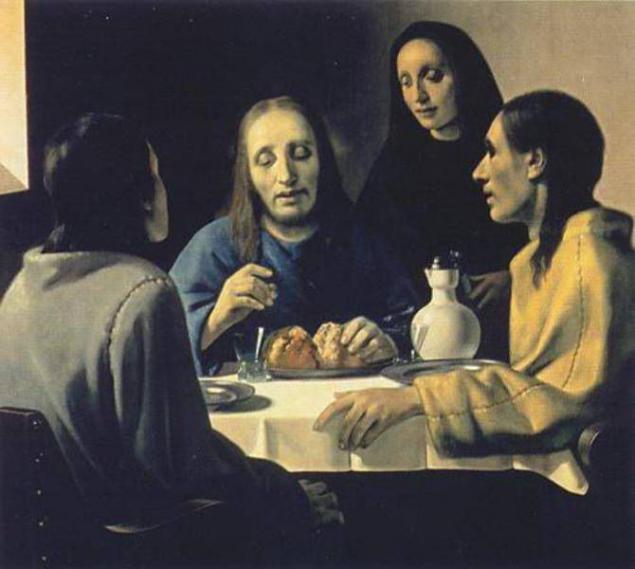
"Odalisque", Boris Kustodiev The purchase price: $ 6 million sale of the painting "Odalisque", exhibited at Christie's auction in 2005 as a work by Boris Kustodiev, cast doubt on the reputation of the auction house (together with Sotheby's, it accounts for a large part of an auction of the world market ). The picture for $ 2, 9 million (a record price for Kustodiev) bought Viktor Vekselberg. Auction house, according to the rules, gave the buyer a guarantee of 5 years. However, some time after the purchase of specialists fund Aurora Fine Art (whose main owner is Vekselberg) said that he doubted the authenticity of the picture. Leading Russian experts say that the author of the picture was not Kustodiev, and another artist who painted in the style of a Russian artist, when you copy the elements of his other paintings. Typically, the auction houses are trying to solve similar situations quickly and without publicity, but the dispute was decided by the Supreme Court in London. After two years of proceedings, the court allowed Vekselberg cancel the transaction and return the money.

"The Forest", Max Ernst Cost of purchase: $ 7 million German Wolfgang Beltrachchi drew first forgery in 1965, when he was 14 years old. It was Picasso's "blue period". However, his main "specialization" were German artists, among which the most frequent work made under the expressionist Heinrich Campendonk. They Beltrachchi and his wife, Helen earned first capital, and then moved on to a more "expensive" names - Fernand Léger, Georges Braque and Max Ernst. The couple came up with the story that Helen Beltrachchi inherited a collection of paintings by these artists from his grandfather, paintings, in turn, sold almost nothing known Jewish collectors Alfred Flehtaym (shortly afterwards to power in Germany, the Nazis came and Flehtaym fled to France) . In the early 2000s he drew Beltrachchi "Ernst", the authenticity of which no doubt even Vernes Spice, a former director of the Centre Pompidou in Paris, considered one of the top experts on Max Ernst. A widow of the artist to see the work of "Forest", said it was the best thing ever created Ernst. As a result, "The Forest" was sold to a Swiss firm for $ 2, 3 million, and after a while the picture was the famous collector of the Surrealists - French publisher Daniel Filipachchi, who paid for her $ 7 million. After that, luck began to change Beltrachchi. One of the oldest auction houses - German Lempertz - sold the painting Kampedonka Maltese fund, which questioned the authenticity of the work and began to examine. As a result of fraud surfaced. Wolfgang Beltrachchi court sentenced to 6 years in prison, and his wife - to 4.
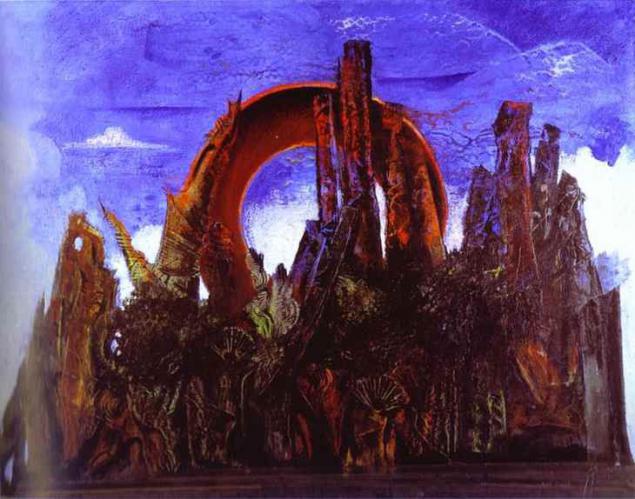
"Lilac tablecloth", Marc Chagall The purchase price: $ 500,000 One of the most daring schemes for the sale of counterfeit belongs to the American art dealer Iranian Eli Saha. He sold the original and fake, written from the original. This fake, usually accompanied by a certificate, which is an art dealer received when buying the original. For example, a picture of Marc Chagall "Lilac tablecloth," Sahay purchased in 1990 at a Christie's auction for $ 312,000. A copy of this work, he then sold to the Japanese collector for more than $ 500 thousand, and the original is resold at the same Christie's eight years later for $ 626,000. On Sahay activities drew the attention of the FBI after 2000 two major auction house Christie's and Sotheby's at the same time put up for sale two of the same picture - "Vase with lilies" by Paul Gauguin. Forgery intended to sell any unsuspecting Japanese collector who recently bought the painting from Sahay. And he decided to sell Sahay already present Gauguin through competing organization. Most fakes Eli Sahay sold in Asia, and the originals go under the hammer auction houses in London and New York. Japanese collectors do not always able to distinguish the true from the fake Chagall, and invites experts from Europe made sense, at stake was the picture with a price tag of a million dollars, and Sahay so expensive paintings traded.
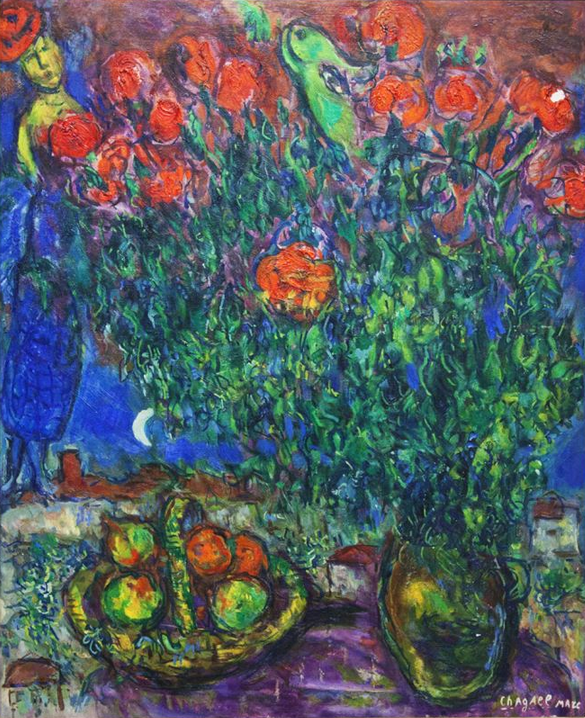
"Tug and barge in Samoa," Paul Signac After detecting counterfeit paintings are not always destroyed. In the West there is a practice of transferring such paintings in the artistic or historic universities, to the example of successful or unsuccessful fakes teach students. In recent years become increasingly popular exhibition of fakes who organize these universities. One of the most popular was held in Ohio in 2012. It showed "Picasso", "Signac", "curry" brush Mark Lundy, who drew for his life is not less than 60 fakes. Despite the fact that the activities of Landi FBI opened back in 2008, no charges were not nominated him as his pictures, he did not sell, but gave away to museums. But strictly speaking, the financial damage a museum (there was not less than 30) still suffered - first of all, spending money now to check the work that Lundy brought them a gift. Often sounding a false name and on behalf of the religious community, Lundy gave a fake picture, ostensibly in memory of a relative who was involved in the museum or its management. One day he visited the museum director Hilliard University in Lafayette, Louisiana, and presented him with a painting by American artist Charles Curran. Expert checking the picture, I found that oil painted not on canvas, but on the printed reproduction paintings. Given that the expert community - a close circle of people who know each other well, it soon became clear that shortly before the puncture with "Carreno," Mark Lundy donated to the Museum of Oklahoma, "Paul Signac" (original works hanging in the Hermitage Museum in St. Petersburg). With that same "Signac" at the same time he presented the museum and in Georgia. Everywhere under the oil stood out pixels printed reproductions.

"Modigliani" of de Hori On Elmira Elmira de Hori write books and make movies. During his life, he created thousands of fakes the most famous and expensive artists - from the Impressionists to the modernists. To verify the true origin of the paintings, de Hori bought old catalogs with a picture of the desired artist, and then carefully cut it out, drew his "Matisse" or "Picasso", photographed the painting and graphic inserted back into the directory. The buyer in this case there was no doubt that the original before him. Cheating revealed after in 1960s Texas oil tycoon Algur Medauz bought a large collection of paintings - "Modigliani", "Picasso", "Matisse" and the other - from the art dealer Fernand Legros, who collaborated with de Hori. After Medauz sued de Hori chose to remain in Spain. There he continued to paint, but signed his name. In 1980, after the artist's death, major auction houses - Sotheby's and Christie's began to sell his work under his own name - the price starts from a few hundred pounds and up to several thousand. However, in the early 1990s, experts have noticed that the quality of work was not always equally good, and suspected that the most de Hori, too, someone forges. Bidding works of the artist decided to stop.
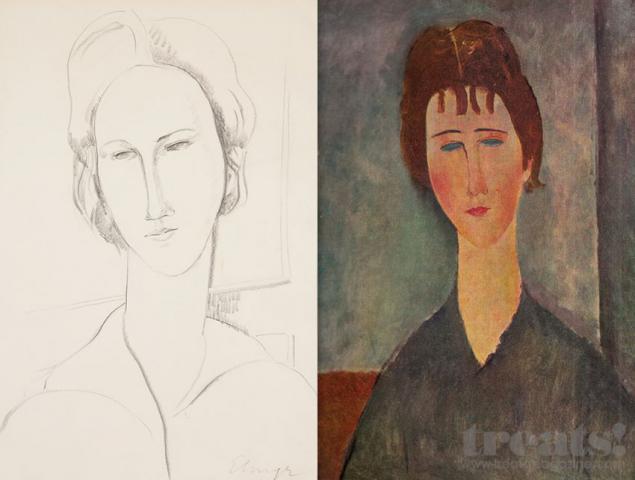
"Degas" by Tom Keating Briton Tom Keating, like many other artists to paint a fake, was not going to make a living as an unsightly manner. However, an artist by the name of Keating did not want to buy. First he drew a fake, when he worked as a restorer - it was a work in the style of British artist Frank Moss Bennett. Teammate Keating took the picture without asking permission from the artist, in the next gallery, where she accidentally discovered Keating himself on the way to work. He considers himself a follower of Edgar Degas. He said that a famous artist was a master teacher of his early teachers. Then, however, Keating claimed that it woke El Greco. During his life he painted about two thousand paintings, which are now sold at auction under the name Keating. In the 1980s, when the artist revealed the hoax, no one was interested in them, but ten years later, Tom Keating paintings sold for thousands of pounds and, according to experts, in the future will only get more expensive.
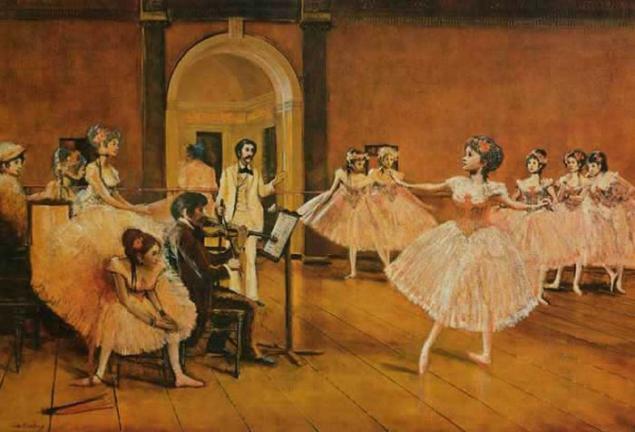
Source: www.adme.ru

In mid-September in the United States completed the process of art dealer Glafira Rosales, who managed to sell under the guise of originals 60 fake works of art worth a total of $ 30 million. Now Rosales waits 20 years in prison, but in a few years - from 1994 to 2009 - it fraud goes undetected. Pictures acquired major New York gallery. Cost of purchase: $ 17 million

Forgery Giacometti sculptures by Alberto Giacometti - a famous sculptor, painter and graphic artist, one of the greatest masters of the XX century. A forged his works the Dutch painter Robert Drayssen, one of the most famous counterfeiters. Like most of his "colleagues", the creative life Drayssena there was bad - he simply did not need anyone! His first fakes he did in the 80s. Then Drayssen met with great authority black art market. Among his first customers, for example, was Michael Van Ryan, one of the most successful dealers in the illegal art market. In the late '90s he became Drayssen began to copy the style of Giacometti. The sculptor of his life created a bit of work, some traces were lost. Thus it was invented the story that Giacometti's brother Diego, at night, make copies with sculptures and hid them in the closet. Copies dispersed through the world of millions of euros as an intermediary Drayssena not been arrested, and the forger did not flee to Thailand. I managed after all! Not everyone is so lucky! Cam also Drayssen in an interview with the German Der Spiegel magazine said nothing to regret, and that people are willing to pay tens of thousands of euros for this Giacometti, deserve to be cheated. The most expensive work of Alberto Giacometti, by the way, was sold at Sotheby's in 2010 for $ 104 million. The expert allegedly shows a previously unknown sculpture by Giacometti.

"Christ at Emmaus", Jan Vermeer The purchase price: $ 6 million Dutch painter Han van Meegeren, who was born in the late XIX century, the famous work of fakes in the style of Jan Vermeer. The wealth he brought the painting "Christ at Emmaus". His work Meegeren, worked as an art dealer in 1937 sold under the guise of a canvas by Vermeer. After this transaction, the artist bought a house in Nice, where painted several paintings in the style of Vermeer, one of which - "Christ and the Sinner" - then sold ally of Hitler Hermann Goering. After the Second World War, the police brought the painting home Meegerenu so that the art dealer helped to return to work. Meegeren declined to say who he "bought" "Vermeer", for which he was charged with treason. The artist faces life term. In court Meegeren confessed that drew a fake, but did not believe him, even when he was indignant: "Yes, as you might assume that I sold this Goering Vermeer! I sold him a fake! ", Because at the time the critics unanimously recognized the authorship of Vermeer. In order to prove their skills Meegeren painted another "Vermeer" and was sentenced to one year in prison.

"Odalisque", Boris Kustodiev The purchase price: $ 6 million sale of the painting "Odalisque", exhibited at Christie's auction in 2005 as a work by Boris Kustodiev, cast doubt on the reputation of the auction house (together with Sotheby's, it accounts for a large part of an auction of the world market ). The picture for $ 2, 9 million (a record price for Kustodiev) bought Viktor Vekselberg. Auction house, according to the rules, gave the buyer a guarantee of 5 years. However, some time after the purchase of specialists fund Aurora Fine Art (whose main owner is Vekselberg) said that he doubted the authenticity of the picture. Leading Russian experts say that the author of the picture was not Kustodiev, and another artist who painted in the style of a Russian artist, when you copy the elements of his other paintings. Typically, the auction houses are trying to solve similar situations quickly and without publicity, but the dispute was decided by the Supreme Court in London. After two years of proceedings, the court allowed Vekselberg cancel the transaction and return the money.

"The Forest", Max Ernst Cost of purchase: $ 7 million German Wolfgang Beltrachchi drew first forgery in 1965, when he was 14 years old. It was Picasso's "blue period". However, his main "specialization" were German artists, among which the most frequent work made under the expressionist Heinrich Campendonk. They Beltrachchi and his wife, Helen earned first capital, and then moved on to a more "expensive" names - Fernand Léger, Georges Braque and Max Ernst. The couple came up with the story that Helen Beltrachchi inherited a collection of paintings by these artists from his grandfather, paintings, in turn, sold almost nothing known Jewish collectors Alfred Flehtaym (shortly afterwards to power in Germany, the Nazis came and Flehtaym fled to France) . In the early 2000s he drew Beltrachchi "Ernst", the authenticity of which no doubt even Vernes Spice, a former director of the Centre Pompidou in Paris, considered one of the top experts on Max Ernst. A widow of the artist to see the work of "Forest", said it was the best thing ever created Ernst. As a result, "The Forest" was sold to a Swiss firm for $ 2, 3 million, and after a while the picture was the famous collector of the Surrealists - French publisher Daniel Filipachchi, who paid for her $ 7 million. After that, luck began to change Beltrachchi. One of the oldest auction houses - German Lempertz - sold the painting Kampedonka Maltese fund, which questioned the authenticity of the work and began to examine. As a result of fraud surfaced. Wolfgang Beltrachchi court sentenced to 6 years in prison, and his wife - to 4.

"Lilac tablecloth", Marc Chagall The purchase price: $ 500,000 One of the most daring schemes for the sale of counterfeit belongs to the American art dealer Iranian Eli Saha. He sold the original and fake, written from the original. This fake, usually accompanied by a certificate, which is an art dealer received when buying the original. For example, a picture of Marc Chagall "Lilac tablecloth," Sahay purchased in 1990 at a Christie's auction for $ 312,000. A copy of this work, he then sold to the Japanese collector for more than $ 500 thousand, and the original is resold at the same Christie's eight years later for $ 626,000. On Sahay activities drew the attention of the FBI after 2000 two major auction house Christie's and Sotheby's at the same time put up for sale two of the same picture - "Vase with lilies" by Paul Gauguin. Forgery intended to sell any unsuspecting Japanese collector who recently bought the painting from Sahay. And he decided to sell Sahay already present Gauguin through competing organization. Most fakes Eli Sahay sold in Asia, and the originals go under the hammer auction houses in London and New York. Japanese collectors do not always able to distinguish the true from the fake Chagall, and invites experts from Europe made sense, at stake was the picture with a price tag of a million dollars, and Sahay so expensive paintings traded.

"Tug and barge in Samoa," Paul Signac After detecting counterfeit paintings are not always destroyed. In the West there is a practice of transferring such paintings in the artistic or historic universities, to the example of successful or unsuccessful fakes teach students. In recent years become increasingly popular exhibition of fakes who organize these universities. One of the most popular was held in Ohio in 2012. It showed "Picasso", "Signac", "curry" brush Mark Lundy, who drew for his life is not less than 60 fakes. Despite the fact that the activities of Landi FBI opened back in 2008, no charges were not nominated him as his pictures, he did not sell, but gave away to museums. But strictly speaking, the financial damage a museum (there was not less than 30) still suffered - first of all, spending money now to check the work that Lundy brought them a gift. Often sounding a false name and on behalf of the religious community, Lundy gave a fake picture, ostensibly in memory of a relative who was involved in the museum or its management. One day he visited the museum director Hilliard University in Lafayette, Louisiana, and presented him with a painting by American artist Charles Curran. Expert checking the picture, I found that oil painted not on canvas, but on the printed reproduction paintings. Given that the expert community - a close circle of people who know each other well, it soon became clear that shortly before the puncture with "Carreno," Mark Lundy donated to the Museum of Oklahoma, "Paul Signac" (original works hanging in the Hermitage Museum in St. Petersburg). With that same "Signac" at the same time he presented the museum and in Georgia. Everywhere under the oil stood out pixels printed reproductions.

"Modigliani" of de Hori On Elmira Elmira de Hori write books and make movies. During his life, he created thousands of fakes the most famous and expensive artists - from the Impressionists to the modernists. To verify the true origin of the paintings, de Hori bought old catalogs with a picture of the desired artist, and then carefully cut it out, drew his "Matisse" or "Picasso", photographed the painting and graphic inserted back into the directory. The buyer in this case there was no doubt that the original before him. Cheating revealed after in 1960s Texas oil tycoon Algur Medauz bought a large collection of paintings - "Modigliani", "Picasso", "Matisse" and the other - from the art dealer Fernand Legros, who collaborated with de Hori. After Medauz sued de Hori chose to remain in Spain. There he continued to paint, but signed his name. In 1980, after the artist's death, major auction houses - Sotheby's and Christie's began to sell his work under his own name - the price starts from a few hundred pounds and up to several thousand. However, in the early 1990s, experts have noticed that the quality of work was not always equally good, and suspected that the most de Hori, too, someone forges. Bidding works of the artist decided to stop.

"Degas" by Tom Keating Briton Tom Keating, like many other artists to paint a fake, was not going to make a living as an unsightly manner. However, an artist by the name of Keating did not want to buy. First he drew a fake, when he worked as a restorer - it was a work in the style of British artist Frank Moss Bennett. Teammate Keating took the picture without asking permission from the artist, in the next gallery, where she accidentally discovered Keating himself on the way to work. He considers himself a follower of Edgar Degas. He said that a famous artist was a master teacher of his early teachers. Then, however, Keating claimed that it woke El Greco. During his life he painted about two thousand paintings, which are now sold at auction under the name Keating. In the 1980s, when the artist revealed the hoax, no one was interested in them, but ten years later, Tom Keating paintings sold for thousands of pounds and, according to experts, in the future will only get more expensive.

Source: www.adme.ru

